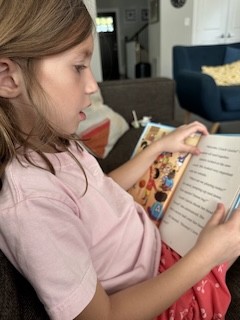Teacher question: What can you tell me about writing fluency in grades K-5? Our district is making a major effort to improve writing which is great, but our kids don’t’ write much. I don’t mean that the teachers don’t give writing assignments (they do), but the writing that the kids produce is very limited and it takes them a long time. I can’t see how we can improve their writing if they can’t write more.
Shanahan response:
Writing fluency is a slippery fish. Definitions of the term vary greatly within the profession (Latif, 2013). Not surprisingly, those differences in definition result in a wide variety of advice for teachers on how to facilitate fluent writing. Accordingly, researchers interested in the matter have spent most of their efforts towards figuring out what fluency is or its relation to writing quality.
Personally, I’m happy that anyone is paying attention to this at all. For a long time, the literature on children’s writing seemed to emphasize quality over fluency. This was done by promoting revision heavily, even in the primary grades. Revision is important, of course, but it only helps if you have gotten your ideas onto paper in the first place. Revising a blank page is an empty exercise.
National and state assessments don’t consider fluency issues directly either. They might get at it incidentally by marking a paper down if its ideas aren’t sufficiently developed. However, lack of development can be as evident in papers with lots of words/sentences as those with few.
I’ve long believed that writing fluency – as much as writing quality – should be a major goal in the early grades (my first publication in the field was about how I had successfully facilitated writing fluency in my classrooms). Over the past couple of decades there has been a growing body of research revealing the pivotal role that handwriting and spelling can play in writing fluency. Experience tells me that instruction in those can facilitate automaticity, but so can emphasis on invented or developmental spelling – reducing student anxiety about potential errors, while providing valuable practice with phonemic awareness and phonics at the same time.
Researchers these days often divide writing into its components. For example, one popular model separates transcription (getting ideas onto paper) from the ability to generate or compose ideas in the first place (Berninger & Winn, 2006).
Sadly, studies that have tried to disassemble writing fluency have left us with a bit of a muddle. I think their expectation has been that fluent transcription includes “lower” skills like spelling and handwriting, while idea generation depends not on these mundane skills but on world knowledge and language proficiency. Things don’t divide up that neatly, however.
In that regard, writing fluency is a lot like reading fluency. For the youngest students and the poorest readers, reading fluency is largely the result of automatic decoding ability – but with development, some aspects of reading comprehension are implicated too (through prosody). Writing has a similar pattern of progression apparently, with printing and spelling sucking up much of the variance early on, but with executive function and oral language increasingly insinuating themselves into the equation as writers progress.
That shouldn’t be too surprising. There are many reasons people have trouble getting ideas on paper.
Kids often tell me that they don’t have any ideas, they don’t know what to write about. That may be an accurate appraisal of their situation, or a convenient excuse for avoiding what for them is an unpleasant and potentially embarrassing task (yes, there are both cognitive and affective reasons for balking at a white page). When students at any level voice this problem, I talk with them. Their ideas flow easily in our conversations but vanish in the monologic situation required of writing (Scardamalia, Bereiter, & Steinbach, 1984).
Another enemy of writing fluency is perfectionism. “If I can’t produce something perfect – that won’t embarrass me – I can’t possibly write.” Concerns about handwriting and spelling may limit fluency. Many kids hesitate when they come to a word that they think they can’t spell, or they engage in wasteful mental gymnastics trying to avoid expressing ideas that would require those words. That’s why taking the pressure off handwriting and spelling quality during drafting can support fluency.
Perfectionism raises its ugly head another way, as well. Writers often are impeded by premature and seemingly infinite revision and editing. They write a sentence, and then rewrite it. Young kids may manage to get a word on paper and then try to erase and improve it before they even get to a second word. This composing, decomposing, and recomposing prevents writing fluency and undermines writer confidence. Few things are more painful than watching a child tearfully laboring over his wordless paper, blotched and torn from such revision. Jacques Derrida referred to this as “interminable revision” and there are scads of electronic writing tools aimed at preventing the problem for adult writers (e.g., Write or Die, iA Writer, OmmWriter, Freewrite Smart Typewriter).
Handwriting issues are a big part of writing fluency early on, but its importance diminishes quickly (Juel, 1988). This may partly be due to the small or fine muscle demands of handwriting – though studies that replace handwriting with keyboarding have reported mixed results (Goldberg, Russell, & Cook, 2003; Spilling, et al, 2021). Sometimes keyboarding results in more fluent production of text and sometimes it doesn’t.
Given all that, what can you do to improve writing fluency?
1. Teach handwriting and spelling explicitly. Such instruction has been found to improve both fluency and quality of writing (Graham, McKeown, Kiuhara, & Harris, 2012). In the early grades at least, I’m a big fan of combining phonics and spelling instruction. The idea is to teach these skills to the point of automaticity. The youngster agonizing over how to form the letter G is not thinking about the ideas that he/she wants to communicate to a reader.
2. Lower the emphasis on spelling and handwriting during drafting. This may sound like I’m talking out of both sides of my mouth – teach spelling but don’t require it – but that isn’t really the case. Handwriting and spelling facilitate communication. The more legible your handwriting and the more accurate your spelling, the more likely it is that readers will focus on your ideas.
However, when drafting, these skills don’t matter very much. Encourage (beseech, implore, beg) students not to worry about their spelling or handwriting while drafting. And don’t undermine this encouragement by spelling words for them or marking up their errors on an early draft.
Young kids benefit from trying to spell words because it requires them to analyze phonemic structure. Spelling instruction increases the body of knowledge that students use when they are trying to spell unknown words.
3. Discussion and planning can play an important role in writing fluency. Research has long found that getting kids talking about what they want to write about improves and makes more efficient the flow of ideas. For the youngest children, drawing about their topic can have the same kind of payoff. As children move up the grades, getting them to list or chart their ideas can help.
4. Require a lot of writing. Students should be reading and writing throughout the day. They should be writing as part of reading, science, social studies, and math. As with any skilled activity, practice plays an important role – and given the learning benefits that writing about a topic can provide (Graham & Hebert, 2010) – writing should be a go-to-activity throughout the curriculum.
5. Engage students in non-stop writing (Datchuck, 2017). The linguist S.I Hayakawa required his college freshman comp students to write – without stopping, rereading, revising -- for an entire class period. John Holt had his fifth graders doing the same for 15 minutes. As a primary grade teacher, my students wrote non-stop in multiple 1-2-minute intervals (Shanahan, 1977).
I’d provide a prompt and then have the students writing non-stop for 1 minute. Then I’d give their hands a rest and change the prompt and have them write for 90 seconds more. Finally, another break was followed by 2 more minutes of non-stop writing. Students who don’t know what to say next are to rewrite their last sentence until they have an idea (promoting the idea of thinking while writing as opposed to being a prelude to writing).
With the beginnings of three compositions in hand, students can begin to shape and improve their ideas. Sometimes I would have them pick the one they liked best for polishing. Or perhaps I would ask them to combine all three into a single paper. Over time, the students gained facility: they could generate a lot of sentences about an idea quickly, they could write and think simultaneously, and because of the limitations of such writing, they came to see the value of revision and editing.
References
Berninger, V. W., & Winn, W. D. (2006). Implications of Advancements in Brain Research and Technology for Writing Development, Writing Instruction, and Educational Evolution. In C. A. MacArthur, S. Graham, & J. Fitzgerald (Eds.), Handbook of writing research (pp. 96–114). The Guilford Press.
Datchuk, S.M. (2017). A direct instruction and precision teaching intervention to improve sentence construction of middle school students with writing difficulties. Journal of Special Education, 51, 62-71. doi:10.1177/0022466916665588
Feng, L., Lindner, A., Ji, X.R., & Joshi, R.M. (2019). The roles of handwriting and keyboarding in writing: A meta-analytic review. Reading & Writing, 32, 33-63.
Goldberg, A., Russell, M., & Cook, A. (2003). The effect of computers on student writing: A meta-analysis of studies from 1992 to 2002. Journal of Technology, Learning, and Assessment, 2(1), 3–50.
Graham, S. (2009-2010). Want to improve children’s writing? Don’t neglect their handwriting. American Educator, 20-27,40
Graham, S., McKeown D., Kiuhara, S., & Harris, K.R. (2012). A meta-analysis of writing instruction for students in the elementary grades. Journal of Educational Psychology, 104, 879–896.
Juel, C. (1988). Learning to read and write: A longitudinal study of 54 children from first through fourth grades. Journal of Educational Psychology, 80, 437-447.
Kent, S., Wanzek, J., Petscher, Y., Al Otaiba, S., & Kim, Y. (2014). Writing fluency and quality in kindergarten and first grade: The role of attention, reading transcription, and oral language. Reading & Writing, 27(7), 1163-1188.
Kim, Y.G., Gatlin, B., Al Otaiba, S., & Wanzek, J. (2018). Theorization and an empirical investigation of the component-based and developmental text writing fluency construct. Journal of Learning Disabilities, 51(4), 320-335.
Latif, M. (2013). What do we mean by writing fluency and how can it be validly measured? Applied Linguistics, 34(1), 99-105. https://doi.org/10.1093/applin/ams073
Ouellette, G., & Sénéchal, M. (2017). Invented spelling in kindergarten as a predictor of reading and spelling in Grade 1: A new pathway to literacy, or just the same road, less known? Developmental Psychology, 53(1), 77–88. https://doi.org/10.1037/dev0000179
Scardamalia, M., Bereiter, C. and Steinbach, R. (1984), Teachability of Reflective Processes in Written Composition. Cognitive Science, 8, 173-190. https://doi.org/10.1207/s15516709cog0802_4
Shanahan, T. (1977). Writing marathons and concept development. Language Arts,
Spilling, E.F., Rønneberg, V., Rogne, W.M. et al. (2021). Handwriting versus keyboarding: Does writing modality affect quality of narratives written by beginning writers? Reading & Writing. https://doi.org/10.1007/s11145-021-10169-y







Comments
See what others have to say about this topic.